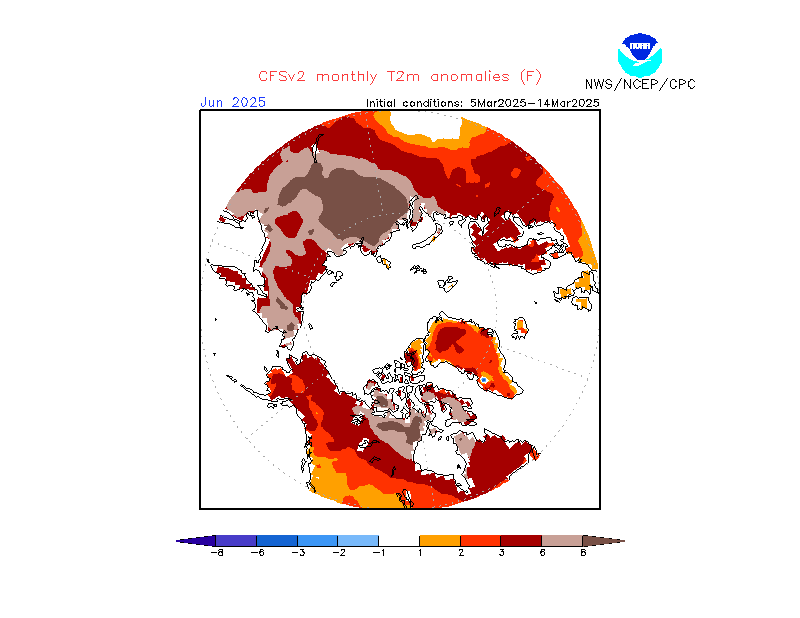The second negative is the ice-free area at the top of the map. We've been harping on about the Bering and Chukchi seas, and the Bering Strait that separates them, for three years. There is something going on in that part of the Arctic that we've not heard well-explained by folks who should be in the know.
The third negative is the ice volume graph top right but is more amenable to explanation than #2. Volume is the combination of thickness and extent and we don't care as much about extent as we do about thickness. When you talk about the physics of melting and the phase changes of H₂O it's all about the thickness. Of course the extent matters for albedo but it's polar night and there is no sunlight and hence no albedo.
And the positive. It appears the model runs we mentioned in September 15's "Some Potentially Positive News For The Arctic Ice Cap This Winter" are showing some "skill" as the modelers put it.
These are air at two-meters height, not sea-surface temps, but they affect ice formation:
Jumping ahead to December the hotspots are beginning to dissipate and the air off Greenland's east coast is also cooling, in this case to a lower than average temperature facilitating sea ice growth in the Fram Strait which acts like a stopper in a bottle:
This is important because one of the hazards to Arctic sea ice, beyond straight-up melting is the mechanical action of wind and storms blowing across the Arctic from the Bering, Chukchi and Beaufort seas which 1) break up the ice and 2) force it out of the Arctic basin through the Fram Strait between Greenland and the Svalbard archipelago.
Referring back to the DMI's thickness map, it is good to have ice on Greenland's east coast and surrounding Svalbard on the 20° East longitude line:
Plus it makes it easier for the polar bears to wander over and nosh on ill-informed eco-tourists:
September 9, 2019
Oh Good Grief: "Arctic tours ship M/S MALMO with 16 passengers on board got stuck in ice"
From Maritime Bulletin, September 4:
Arctic tours ship MS MALMO with 16 passengers on board got stuck in ice on Sep 3 off Longyearbyen, Svalbard Archipelago, halfway between Norway and North Pole. The ship is on Arctic tour with Climate Change documentary film team, and tourists, concerned with Climate Change and melting Arctic ice....MORE
